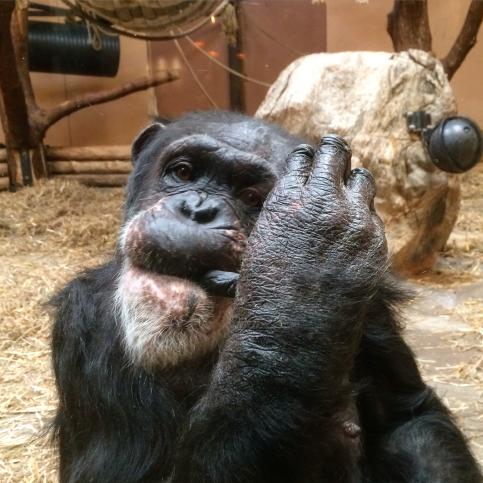
Sweet-tasting carbohydrates has been reported to be important for primates regarding their need for metabolic energy. Thus, it seems reasonable to assume that primates should be sensitive to these taste substances.
Several studies have assessed the responsiveness of non-human primates to substances tasting sweet to humans. Notable differences in the taste sensitivity for sugars have been found between species of primates. These results raise the question if these differences in sweet-taste sensitivity are due to differences in the dietary specialization, allometric relationships or phylogenetic relatedness.
Chimpanzees (Pan troglodytes) include a large variety of food idems of both plant and animal origin into their diet. However, depending on season they spend 31-88 % of their feeding time foraging on various fruits. Fruits are rich in carbohydrates and are often low on other essential nutrients, such as minerals, fats and protein. This may explain why chimpanzees also feed on, for instance, leaves, seeds, flowers, underground storage organs, pith, insects, and small vertebrates.
The five carbohydrates sucrose, glucose, lactose, maltose and fructose used in the present study are naturally occurring food-associated carbohydrates.
►Sucrose, glucose and fructose are the three quantitatively predominant soluble carbohydrates found in fruits.
►Lactose is the predominant carbohydrate found in milk which is the first diet of mammals. Chimpanzee milk contains 7.4 g/100 ml of lactose, corresponding to a concentration of 216 mM.
►Maltose contributes to a sweet taste sensation when the animal is feeding on starch-containing plants during mastication and via enzymatic degradation starch is converted to sweet-tasting maltose).
►The two glycosides stevioside and rebaudioside A used in the present study are two compounds found in the neotropical plant species Stevia rebaudiana which is endemic to Paraguay in South America. Further, both substances have been found to be 100-300 times sweeter than sucrose for humans.
Responsible for this page:
Director of undergraduate studies Biology
Last updated:
